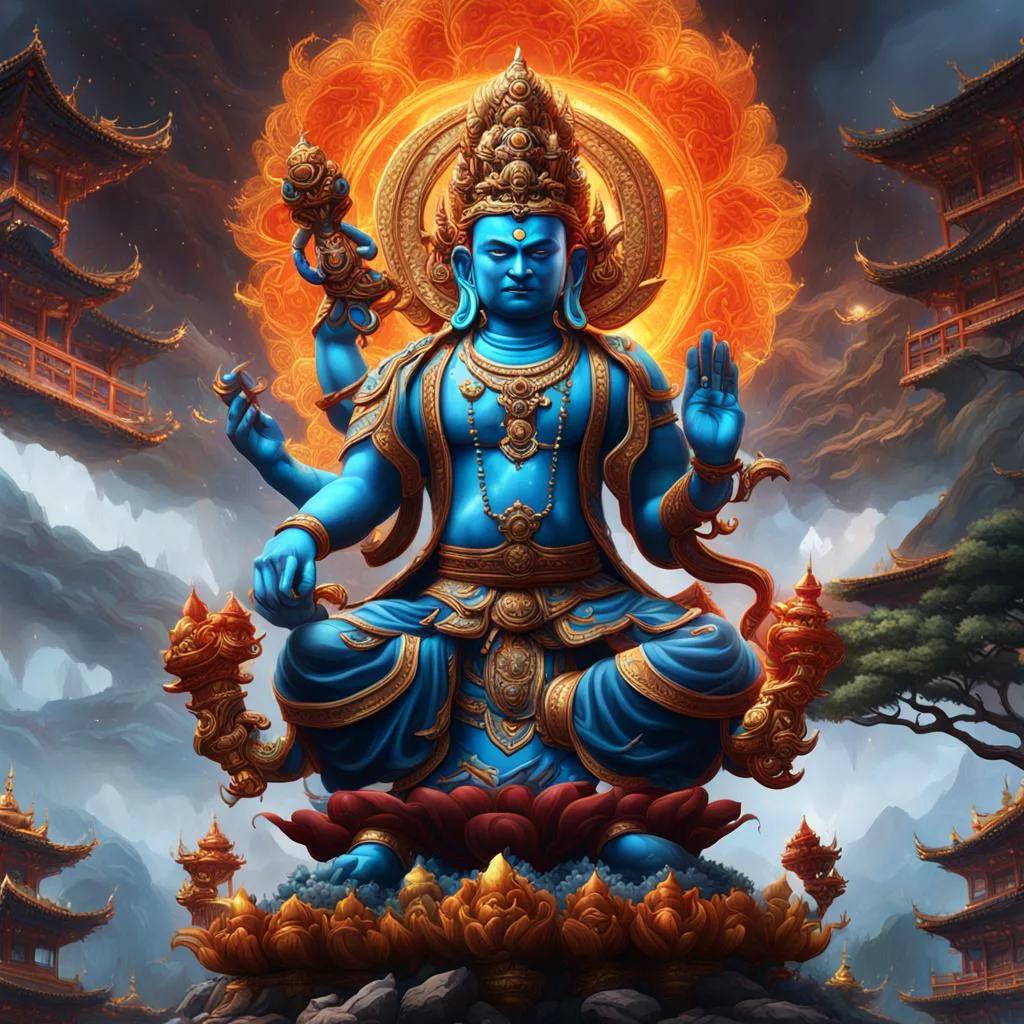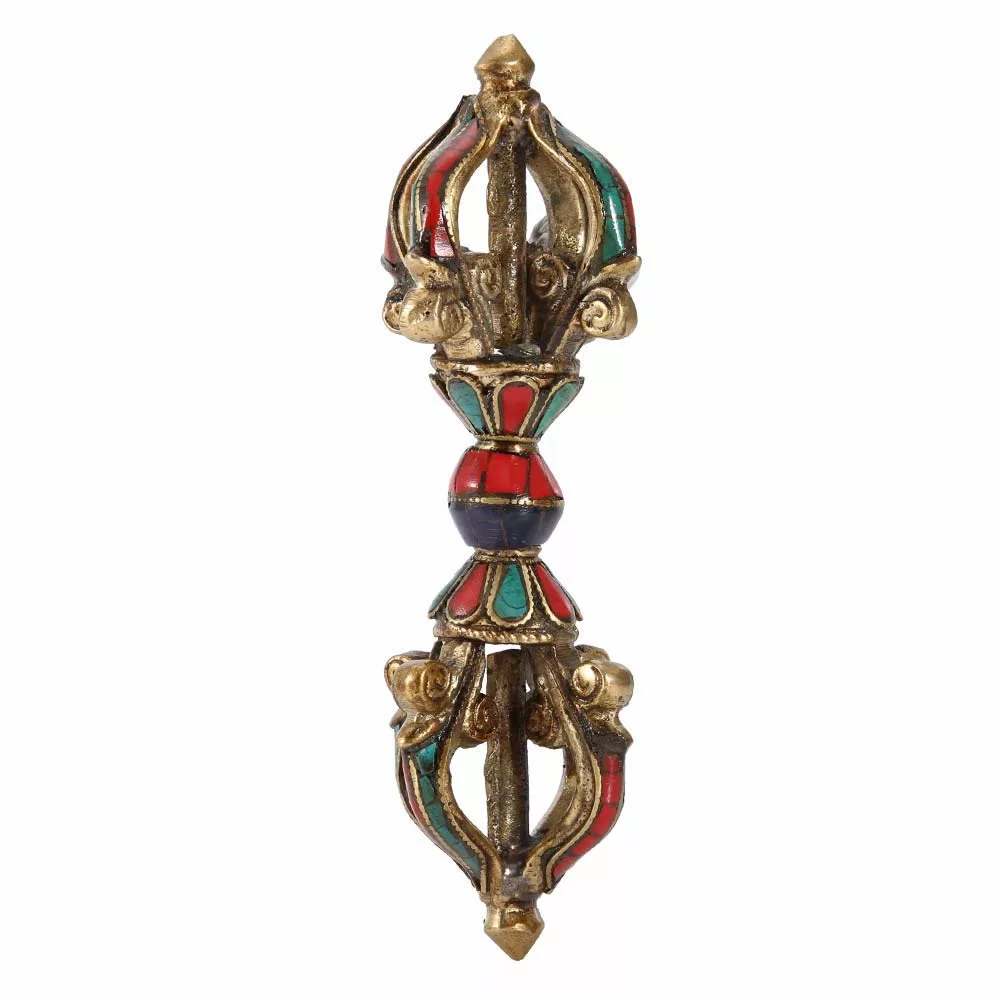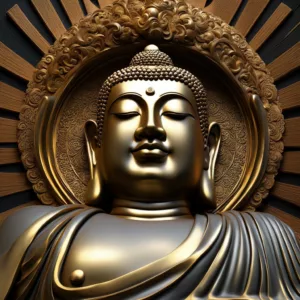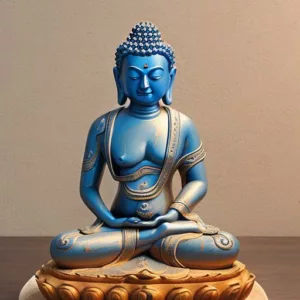
Vajrapani is one of the 3 bodhisattvas. He is associated with power and the propagation of the Vajrayana teachings.
Summary Vajrapani
Vajrapani Summary
Central Entity:
- Vajrapani (Bodhisattva): A wrathful Bodhisattva known for his fierce compassion and protective power in Vajrayana Buddhism.
Connected Entities:
- Vajra (Symbol): A diamond thunderbolt symbolizing the power of wisdom and skillful means in Buddhist teachings.
- Buddha (Concept): A fully enlightened being who has achieved liberation from suffering and the cycle of rebirth.
- Bodhisattva (Concept): An enlightened being who compassionately postpones their own nirvana to guide others on the path to enlightenment.
- Wrathful Deity (Concept): A fierce and powerful deity within Vajrayana Buddhism, often depicted with a wrathful expression, symbolizing the destruction of negative emotions and obstacles on the spiritual path.
- Protectors (Concept): Beings within Buddhist traditions who safeguard the Dharma (teachings) and practitioners from harm and obstacles.
- Vajrayana Buddhism (Tradition): A branch of Mahayana Buddhism emphasizing esoteric practices, rituals, and visualizations.
Relationships:
- Embodies (Vajrapani – Vajra): Vajrapani’s name translates to “Vajra in hand,” signifying his connection to the vajra symbol and its qualities of wisdom and skillful means.
- Aspires to become (Vajrapani – Buddha): Like all Bodhisattvas, Vajrapani strives to achieve Buddhahood for the benefit of all beings.
- Represents (Vajrapani – Wrathful Deity): Vajrapani embodies the wrathful aspect, symbolizing the fierce compassion and power to overcome negativity and obstacles.
- Acts as (Vajrapani – Protector): He serves as a protector of the Dharma and practitioners, safeguarding them from inner and outer hindrances on the spiritual path.
- Associated with (Vajrapani – Vajrayana Buddhism): Vajrapani is a prominent figure specifically within the Vajrayana tradition, where his symbolism and practices hold particular significance.
Iconography and Symbolic Meaning:
- Multiple Arms: Vajrapani is often depicted with multiple arms, typically two, four, or six, symbolizing his ability to act swiftly and skillfully in various situations.
- Wrathful Expression: His wrathful expression signifies his fierce determination to overcome negativity and his unwavering commitment to protecting the Dharma.
- Vajra: He invariably holds a vajra in his hand, representing the power of wisdom and skillful means to cut through ignorance and negativity.
- Lotus Flower: The lotus flower, sometimes depicted as his base, symbolizes his purity and spiritual potential amidst the turbulent world.
- Animal Skins: He may be adorned with animal skins, such as a tiger or elephant skin, symbolizing his mastery over wild and untamed forces within oneself.
- Colors: The specific colors used in depictions can carry symbolic meaning. Blue often represents wisdom, while red can symbolize fierce compassion and power.
Additional Notes:
- Mantras (sacred chants) and visualizations are central to practices associated with Vajrapani in Vajrayana Buddhism.
- While Vajrapani is commonly understood as a wrathful deity, his essence is ultimately one of compassion, using fierce means to cut through negativity and guide beings towards liberation.
This knowledge graph provides a deeper understanding of Vajrapani, incorporating his iconography and the symbolic meaning behind its elements.
Table of Contents
Vajrapani Bodhisattva

Vajrapani Bodhisattva is a figure in Buddhism who embodies the power of the Buddhas. His name translates to “Vajra Holder” or “Thunderbolt Holder,” which symbolizes the unyielding power of compassion. He is often depicted as a wrathful, powerful deity, representing the energy of the enlightened mind which can cut through ignorance and delusion.
Vajrapani is seen as a protector and guide for the Buddha, and is often depicted in Buddhist art as one of the three protective deities surrounding the Buddha, along with Avalokiteshvara and Manjushri. These three together represent the Buddha’s power (Vajrapani), compassion (Avalokiteshvara), and wisdom (Manjushri).
Vajrapani is also associated with the Vajrayana branch of Buddhism, which emphasizes the use of rituals, mantras, and meditation practices to achieve enlightenment. His wrathful appearance is thought to be a manifestation of his determination to overcome obstacles on the path to enlightenment.
In Tibetan Buddhism, Vajrapani is considered a Bodhisattva, or an enlightened being who has chosen to remain in the cycle of rebirth to help all sentient beings achieve enlightenment. He is seen as a fierce but compassionate figure, who uses his power to overcome obstacles and help others on their spiritual journey. He is often depicted holding a vajra, or thunderbolt, a symbol of the indestructible truth of the Buddha’s teachings.
Vajrapani, a revered bodhisattva in Mahayana Buddhism, is known as the “Holder of the Vajra” or the “Thunderbolt Bearer.” As a bodhisattva, Vajrapani has committed to attaining Buddhahood for the benefit of all sentient beings. Vajrapani embodies the transformative power of compassion and is particularly associated with the skillful means to overcome obstacles and delusions on the path to enlightenment.
Vajrapani Meaning
The name Vajrapani derives from two Sanskrit words: “Vajra,” meaning thunderbolt or diamond, and “Pani,” meaning in the hand. Therefore, Vajrapani is often translated as the “Vajra in the Hand” or the “One Who Holds the Thunderbolt.” This name signifies the bodhisattva’s ability to wield the indestructible thunderbolt of wisdom and compassion, capable of cutting through ignorance and dispelling obstacles.
Vajrapani Mantra
The Vajrapani mantra resounds with potent energy, invoking the embodiment of unyielding strength and fierce compassion. Chanted by practitioners across various Buddhist traditions, the mantra is a powerful tool for connecting with the enlightened qualities of Vajrapani. The mantra commonly associated with Vajrapani is:
Om Vajrapani Hum
This mantra encapsulates the essence of Vajrapani’s indomitable strength and the transformative power of enlightened awareness. Devotees chant this mantra with devotion, seeking the blessings and protection of Vajrapani in their spiritual journey.
The name Vajrapani derives from two Sanskrit words: “Vajra,” meaning thunderbolt or diamond, and “Pani,” meaning in the hand. Therefore, Vajrapani is often translated as the “Vajra in the Hand” or the “One Who Holds the Thunderbolt.” This name signifies the bodhisattva’s ability to wield the indestructible thunderbolt of wisdom and compassion, capable of cutting through ignorance and dispelling obstacles.
Vajrapani Statue
In Buddhist iconography, Vajrapani is commonly depicted in a wrathful form, symbolizing the fierce energy necessary to overcome the challenges of ignorance and delusion. Vajrapani statues portray the bodhisattva with a wrathful expression, holding a vajra in one hand and often accompanied by flames, representing the intensity of enlightened awareness. Devotees often seek or create Vajrapani statues for meditation and worship, inviting the bodhisattva’s powerful presence into their spiritual practice.
Vajrapani Mudra

The mudra, or hand gesture, associated with Vajrapani is the Vajrapani mudra. In this mudra, the right hand holds the vajra upright while the left hand holds a bell, symbolizing wisdom.
Together, the vajra and bell represent the union of skillful means and wisdom, essential elements on the path to enlightenment. The Vajrapani mudra is a visual representation of the bodhisattva’s ability to skillfully navigate the dualities of existence.
Three Bodhisattvas
Manjushri
Vajrapani is often associated with two other bodhisattvas, forming a trinity of enlightened beings. One of these is Manjushri, the bodhisattva of wisdom. While Vajrapani represents the power and energy needed to overcome obstacles, Manjushri embodies the wisdom that illuminates the path to enlightenment. Together, Vajrapani and Manjushri offer a harmonious balance of strength and wisdom on the bodhisattva journey.
Avalokiteshvara
The second bodhisattva in the trinity is Avalokiteshvara, the bodhisattva of compassion. Avalokiteshvara complements Vajrapani’s strength and Manjushri’s wisdom with boundless compassion. This trinity symbolizes the integration of compassion, wisdom, and power, providing a comprehensive approach to spiritual development.
Vajrapani
As the third bodhisattva in the trinity, Vajrapani brings the quality of unyielding strength. In the face of challenges, Vajrapani’s fierce energy empowers practitioners to confront and transcend obstacles on the path to enlightenment. The synergy between Vajrapani, Manjushri, and Avalokiteshvara represents a holistic approach to spiritual practice.
Vajrapani’s Role in Tantric Buddhism
In Tantric Buddhism, Vajrapani holds a significant role as a dharma protector and a fierce deity associated with the vajrayana path. The vajrayana, or diamond vehicle, emphasizes swift and profound methods for attaining enlightenment. Vajrapani, in this context, serves as a guardian and guide for practitioners navigating the advanced practices of tantra.
Vajrapani in Tibetan Buddhism
In Tibetan Buddhism, Vajrapani is a prominent figure, often depicted in thangkas and revered in various rituals. The bodhisattva is particularly associated with the practices of Chakrasamvara and Vajrakilaya, where Vajrapani’s powerful energy is invoked for purification and transformation. Tibetan Buddhist practitioners seek the blessings of Vajrapani for protection and assistance in their spiritual endeavors.
The Transformative Power of Vajrapani
The worship of Vajrapani is not confined to rituals and mantras but extends to the transformative power that the bodhisattva represents. Vajrapani’s energy encourages practitioners to face challenges with courage and determination, recognizing obstacles as opportunities for spiritual growth. The bodhisattva’s thunderbolt pierces through illusions, revealing the inherent wisdom and compassion within every sentient being.
Conclusion
Vajrapani, the bodhisattva of indomitable strength, stands as a powerful archetype in Mahayana Buddhism. The Vajrapani mantra, bodhisattva’s meaning, statues, mudra, and association with the trinity of bodhisattvas showcase the multifaceted nature of Vajrapani’s enlightened qualities. Whether in the context of tantric practices or Tibetan Buddhism, Vajrapani remains a source of inspiration and guidance for those traversing the profound path towards enlightenment. In the fierce and compassionate presence of Vajrapani, practitioners find the strength to face challenges, the wisdom to navigate complexities, and the compassion to embrace all beings on the journey to liberation.
Secrets of Meditation for Anxiety
Like millions of people, you may have suffered from anxiety for years. Meditation, yoga, peaceful music – it never works. It takes too long, and it’s not stable. Why? Because peace is treated as a cause for freedom, but it’s not – it’s the result. The cause to free yourself from anxiety is completely different.
Click now to Overcome Anxiety for good.

May all beings be happy
May all beings be peaceful
May all beings be safe
May all beings awaken to the light of their true nature
May all beings be free








